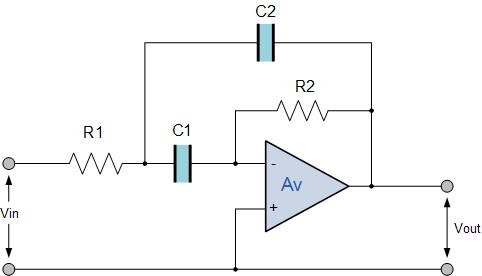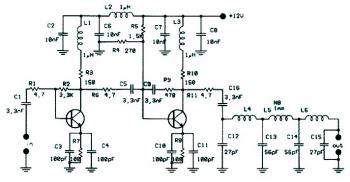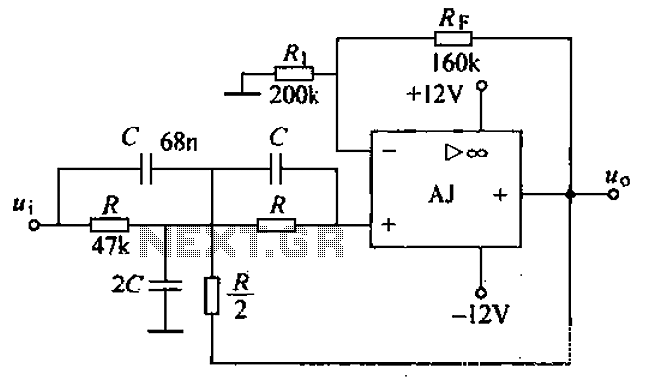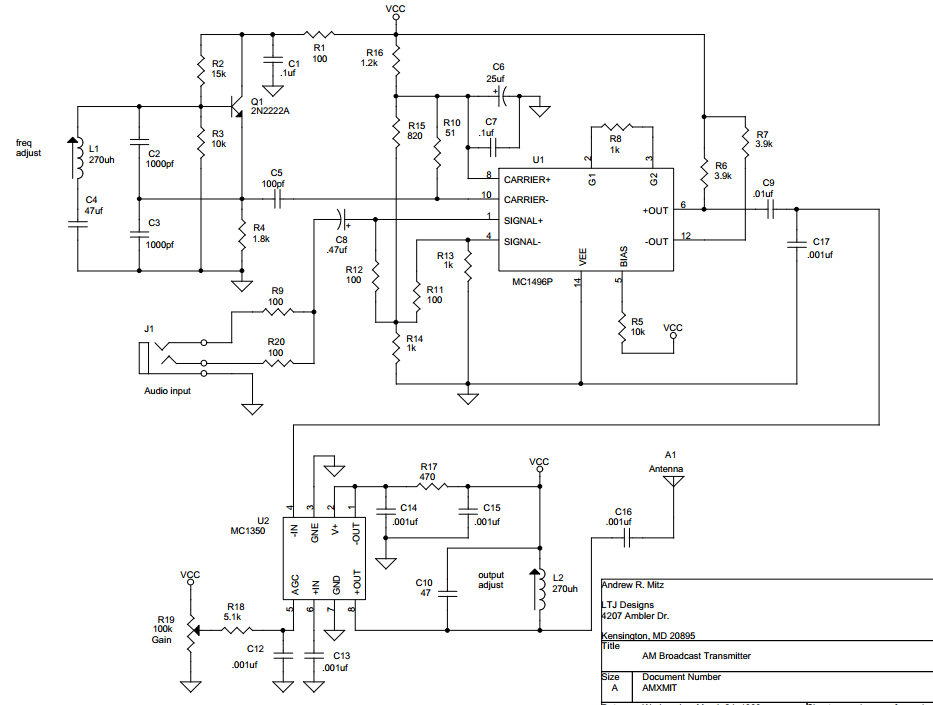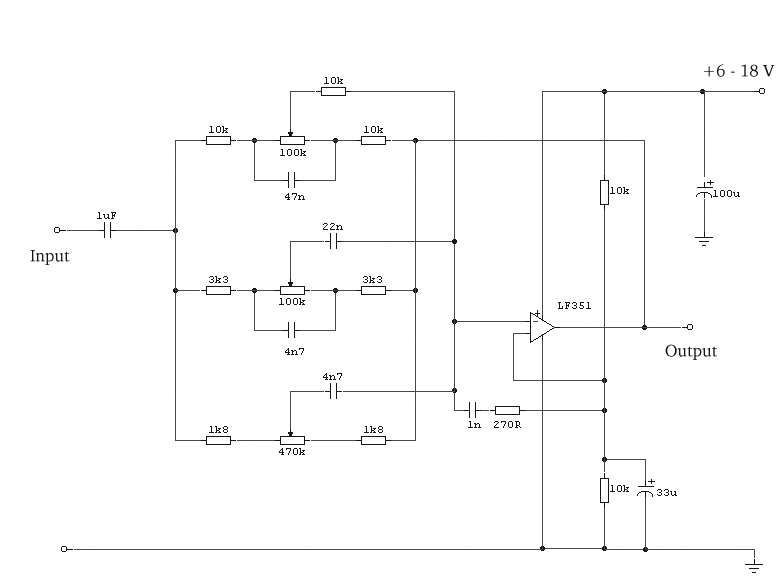
Broadcast Band Booster
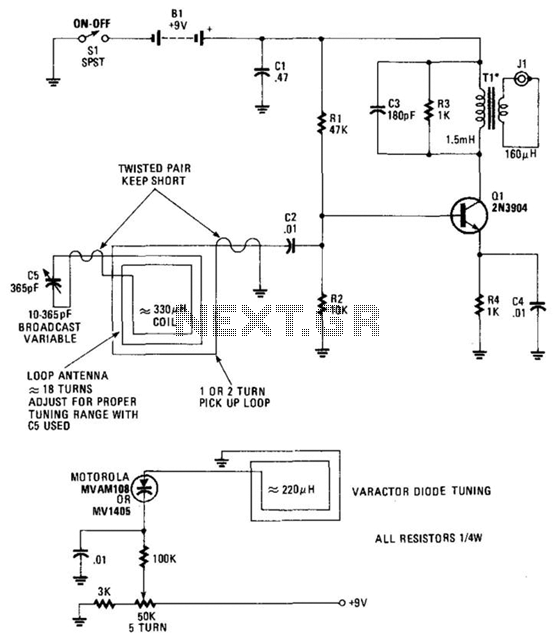
The use of a large loop antenna (12 to 18 inches) facilitates significant signal reception at AM broadcast frequencies. It consists of approximately 18 turns. Tl is a toroidal transformer with an approximate 3:1 turns ratio (non-critical). The primary winding should exhibit an inductance of around 1.5 mH. When utilizing the circuit at (B), a varactor diode may be employed instead of the 10 to 365-pF variable capacitor.
The described circuit utilizes a large loop antenna designed to enhance signal reception capabilities for AM broadcasts. The antenna's dimensions, ranging from 12 to 18 inches, are optimal for capturing low-frequency signals effectively. The configuration includes approximately 18 turns of wire, which increases the antenna's inductive characteristics, thus improving its performance at the desired frequencies.
The toroidal transformer, labeled Tl, has a turns ratio of approximately 3:1, which is not a critical specification but serves to couple the antenna's signal into the subsequent stages of the circuit. The primary winding of the transformer is designed to achieve an inductance of about 1.5 mH. This inductance value is essential for tuning the circuit and ensuring that it resonates well with the AM broadcast frequencies.
In circuit (B), the option to replace the traditional variable capacitor (ranging from 10 to 365 pF) with a varactor diode introduces a modern approach to tuning. Varactor diodes are semiconductor devices that exploit the voltage-dependent capacitance property, allowing for electronic tuning of the circuit. This substitution offers advantages such as reduced size, improved reliability, and enhanced tuning precision. The integration of a varactor diode can streamline the tuning process, enabling the circuit to adjust to various AM frequencies with greater ease and accuracy.
Overall, the design emphasizes efficient signal reception and adaptability, making it suitable for various applications within the realm of AM broadcasting and radio frequency tuning. The use of a loop antenna of large size (12 18") provides a large signal pickup at AM broadcast frequencies. It has about 18 turns. Tl is a toroidal transformer of about 3:1 turns ratio (not critical). The primary winding should have about 1.5 mH inductance. By using the circuit at (B), a varactor diode can be used in place of the 10- to 365-pF variable capacitor.
The described circuit utilizes a large loop antenna designed to enhance signal reception capabilities for AM broadcasts. The antenna's dimensions, ranging from 12 to 18 inches, are optimal for capturing low-frequency signals effectively. The configuration includes approximately 18 turns of wire, which increases the antenna's inductive characteristics, thus improving its performance at the desired frequencies.
The toroidal transformer, labeled Tl, has a turns ratio of approximately 3:1, which is not a critical specification but serves to couple the antenna's signal into the subsequent stages of the circuit. The primary winding of the transformer is designed to achieve an inductance of about 1.5 mH. This inductance value is essential for tuning the circuit and ensuring that it resonates well with the AM broadcast frequencies.
In circuit (B), the option to replace the traditional variable capacitor (ranging from 10 to 365 pF) with a varactor diode introduces a modern approach to tuning. Varactor diodes are semiconductor devices that exploit the voltage-dependent capacitance property, allowing for electronic tuning of the circuit. This substitution offers advantages such as reduced size, improved reliability, and enhanced tuning precision. The integration of a varactor diode can streamline the tuning process, enabling the circuit to adjust to various AM frequencies with greater ease and accuracy.
Overall, the design emphasizes efficient signal reception and adaptability, making it suitable for various applications within the realm of AM broadcasting and radio frequency tuning. The use of a loop antenna of large size (12 18") provides a large signal pickup at AM broadcast frequencies. It has about 18 turns. Tl is a toroidal transformer of about 3:1 turns ratio (not critical). The primary winding should have about 1.5 mH inductance. By using the circuit at (B), a varactor diode can be used in place of the 10- to 365-pF variable capacitor.
